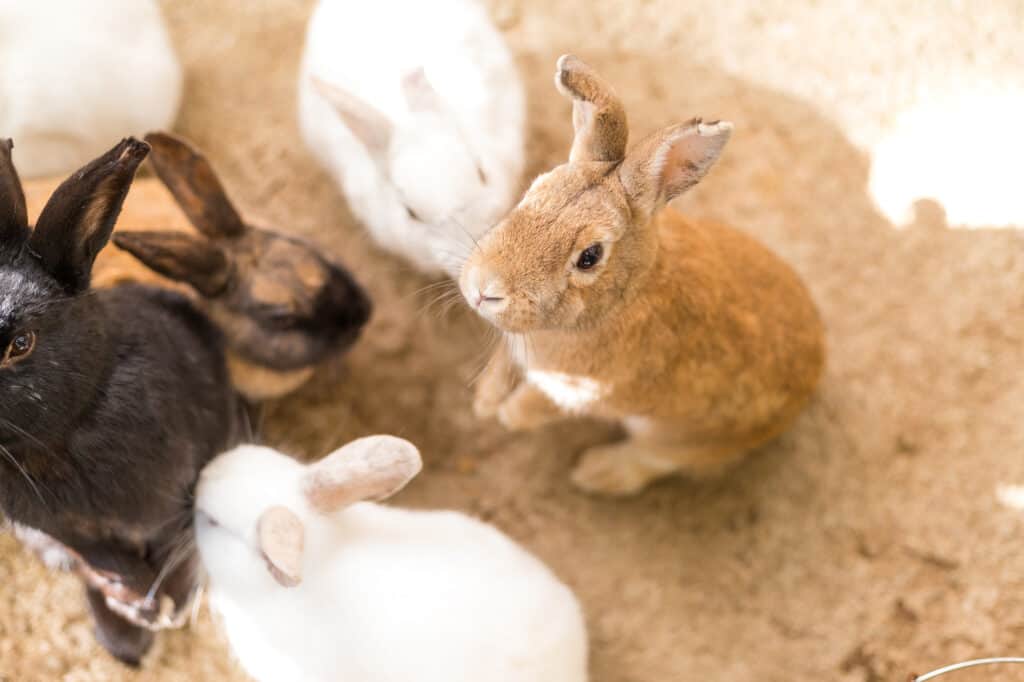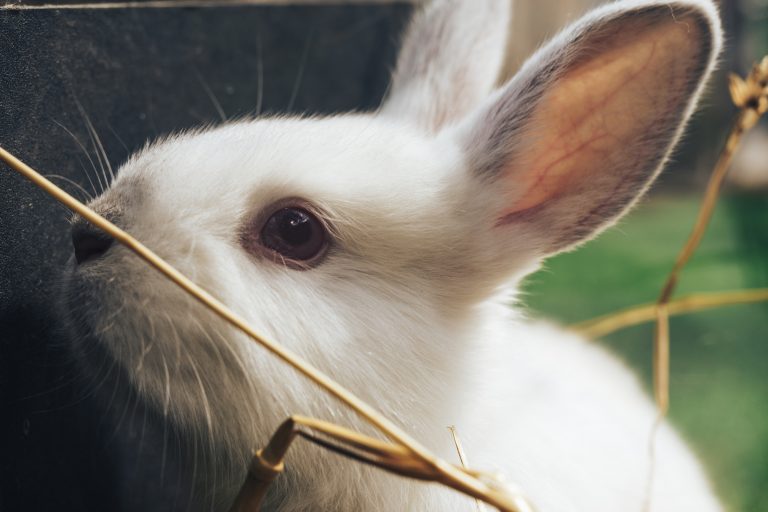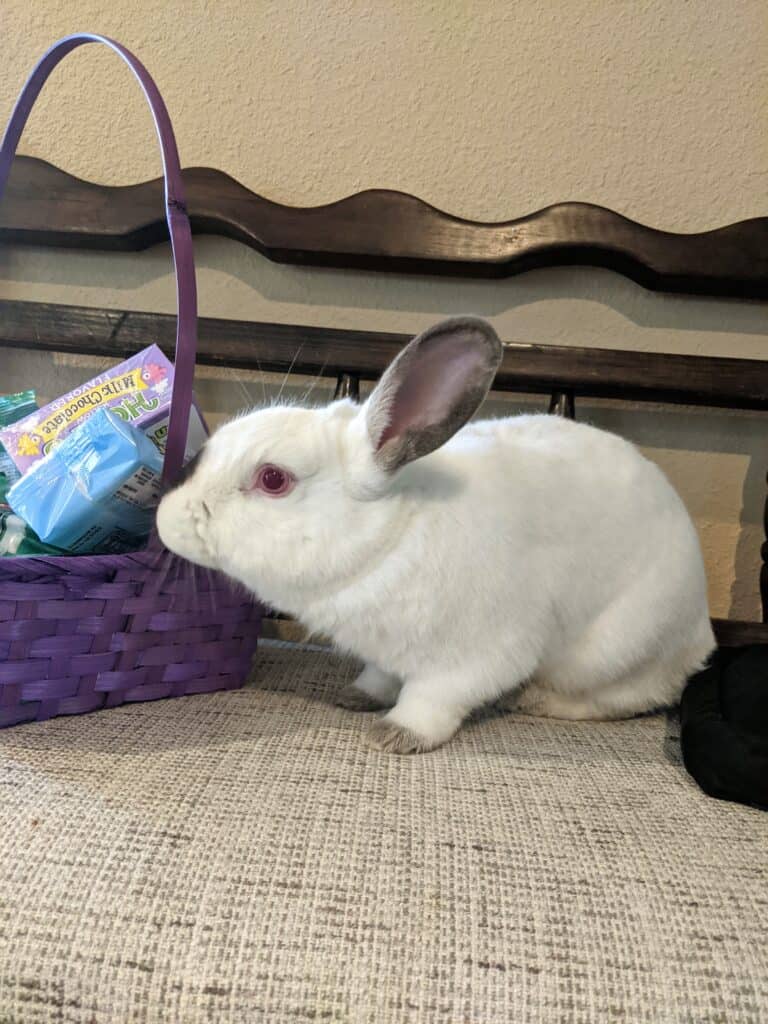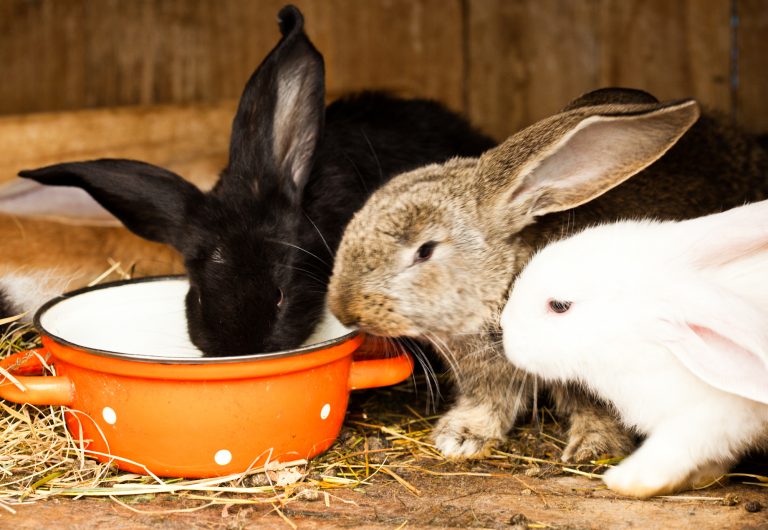Tips for Successful Rabbit Bonding

Rabbits are sociable creatures. That’s why it’s in their nature to want to live in a large group. A solitary bun can get lonely so getting a companion for your pet is a great idea if your living situation allows you to do so. However, even if your bunny will likely want a friend, don’t expect him to welcome another of his kind enthusiastically at first sight. Two buns only become pals for life after they’ve gone through a process called rabbit bonding.
This post contains affiliate links. Affiliate links support Every Bunny Welcome at no additional cost to you. I receive a commission if you choose to make a purchase through these links.
What Is Rabbit Bonding?
Even though rabbits need companionship, they’re also territorial creatures. So putting two unfamiliar buns together without any introduction can lead to trouble. Rabbit bonding is a getting-to-know-you process, where two bunnies learn to become comfortable with each other.
Fostering a strong bond between two buns takes time, but a successful pairing will ensure that your pets will be happy together for life.

How Long Does It Take for Your Rabbits to Bond?
That will really depend on your bunnies. Like with humans, some rabbits click with one another instantly, while with some, it takes several encounters before they finally learn to like each other. As such, it can take as little as one day up to several weeks, or even months, for rabbit bonding to take place.
Rabbit Bonding: The Preparation
If you’re lucky, your two fur babies will like each other on sight, although that rarely happens. What’s more common is for two rabbits to slowly get used to each other until they become best buddies.
To ensure a successful bonding and hasten the process, there are some things you can do.
- Find the right match: A male and female pairing is the easiest. You can get a boy and girl bun at the outset and raise them together. On the other hand, if you’re bringing a companion to a resident pet, choosing one of the opposite sex offers the best chance for a favorable outcome.
- Get your buns fixed: Unaltered rabbits are more likely to fight than desexed ones. Spaying or neutering removes hormone-driven aggression from the equation. Altered rabbits are generally calmer, which can help make the bonding process go smoothly. Moreover, neutering your rabbits also eliminates the risks of unplanned pregnancies and protects against some reproductive system diseases.
- Check their health: If either one or both of your fur babies don’t feel well, they’ll be less inclined to feel sociable towards a stranger. So before introducing your buns, make sure they’re both in excellent shape.
Introducing Your Rabbits to Each Other
It’s tempting just to let both your rabbits loose and see how they deal with each other. But this method carries some risks. For example, the two buns may end up fighting, or one may chase the other, which can cause stress to the one being pursued. Taking some steps before a face-to-face encounter between your rabbits is, in our opinion, a better alternative.
Here’s how to go about helping your buns become friends for life:
1. Let your rabbits get used to each other’s scents
Rabbits have around 100 million scent cells, and they use their excellent sniffing ability to identify others of their kind. So before even letting your pets meet, you can start the introduction process by getting them used to each other’s smell. Swapping blankets, litter trays, and toys between their cages is an excellent trick to accomplish this goal.
2. Let your bun see each other
While keeping a barrier between them, allow your buns to see one another. Placing their cages side by side, for example, not only lets them observe the other but also enables them to smell and hear their neighbor. Make sure there’s enough space between the cages so your buns can’t bite each other.
3. Put them together
Once your fur babies are used to the other’s presence, try to put them together for brief periods. Let these short encounters take place in neutral territory, meaning not one of the buns has a prior claim on the particular area. For example, it can be the bathroom or any room in the house where none of them had stayed before.
Strictly supervise their face-to-face introduction and be ready to intervene in case a fight breaks out. Wear sturdy gloves and keep a towel on hand so you can easily separate the two rabbits if necessary. At the first sign of tension, end the encounter. Try again the next day, lengthening the time the two rabbits are together.
4. Letting go or keep trying
Keep letting your rabbits interact until they get comfortable together. To make the experience a positive one for them, you can offer treats or feed your pets together. Provide hiding spaces like tunnels, tubes, and cardboard boxes so they can avoid facing each other if they’re not inclined to do so.
On the other hand, if the rabbits just are not warming up to each other and constantly aggressive towards each other, this may be a sign that bonding may not happen. In this case, you can keep trying, very slowly. Or to stop the process altogether and keep the nuns separated. Not all rabbits will bond.
5. Introduce the rabbits to their living space
If your fur babies reach the point where they are spending one to two hours each day without any problems, it’s time to introduce them to the space they’ll share. Don’t leave them on their own at first, though, not until you’re sure they’re getting along really well.

Good Signs When Introducing Two Rabbits
- Willingness to share: Rabbits are territorial animals, so sharing doesn’t come naturally to them.
- Playing together: Circling and chasing are common among bonded rabbits. Still, you need to be sure that your buns are really playing and not fighting. If the chasing includes biting, separate your rabbits.
- Sleeping together: Being prey animals, rabbits know they’re vulnerable when they’re asleep. Snuggling with their companion means they’re learning to trust one another.
- Grooming each other: This is one of the most indicative signals of rabbit bonding. Not only is grooming a sign of affection, but it is also a way of establishing a hierarchy among rabbits.
- Displaying signs of social hierarchy: A bonded pair of rabbits usually have a dominant and a submissive partner. Once the order is established, the bonding process is complete, and no matter the role each bun plays, they’ll both be happy. Otherwise, your two buns will keep trying to assert dominance over each other.
Don’t Separate Bonded Rabbits
After your rabbits have bonded, avoid keeping them apart as much as possible. If you need to take one to the vet or out for grooming, bring the other along in the carrier. Separating a bonded pair causes a great deal of stress to both buns.
Bonding your rabbits take time and effort but is one of the surest ways to making your pet happy for life.
More about Rabbit Behavior
- Understanding 15 Rabbit Noises and What They Mean
- Why Do Rabbits Lick You? 11 Reasons for This Common Behavior
- Are Rabbits Nocturnal? Tips for Nighttime Activity
- Why Does My Rabbit Nudge Me?
- Can Rabbits See in the Dark?
We hope you enjoyed this post! If you did, will you give it a share or two 🙂 Thank you! ~from Every Bunny Welcome








After having what seemed like a bad day turned out to be alright I’ve been trying to lighten things up between my bond I meant friend things had been heavy that article changed my whole mood I know it was talking about rabbits but i couldn’t help but feel like the article was talking about my best friend
Hi Allan,
I’m glad you can relate 🙂
Christine